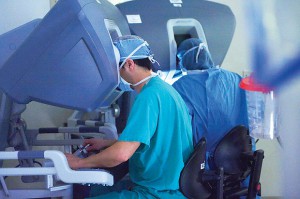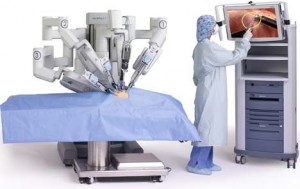
Though robotic surgeries have been common in various disciplines of medicine since the last decade, it’s increasing and successful application in cancer treatment is highly encouraging for the medical fraternity and communities challenged by rising incidence of cancer,” said, Consultant Head & Neck and Robotic Surgeon, at one of the India’s leading Hospitals.
Cancers of the lung and prostate among males and cancers of breast and thyroid among females are the most common cancers in almost all the countries.
“Robotic assisted prostatectomy has given a minimally invasive and less complicated surgical option to treat early and localised cancer of the prostate while robotic thyroidectomy offers similar options in treating cancers of the thyroid. Lung cancer patients can also undergo robotic lobectomy procedureto remove cancers, thus significantly improving recovery times and quality of life post-surgery,” said Consultant Head & Neck and Robotic Surgeon.
Robot-assisted surgery enables to complete minimally invasive procedures with high precision, better results and less damage to the patient’s body. The robotic arms are controlled by a computer console which the surgeon operates using hand and foot controls, somewhat like a video-game, but a thousand times more precise and sophisticated. Using small and hidden incisions surgeons can remove complex cancers minimizing tissue damage, hastening recovery and reducing hospitalisation.

An endoscopic camera provides a 3-D magnified view of the surgical field when viewed through the console, making structures like nerves, blood vessels etc. much larger enabling faster surgery with more precision.
“Though the robot facilitates the surgery, it is the operating surgeon’s hand movements that are transmitted to the robotic arms and the surgeon continues to direct the operation. New generation da Vinci® Surgical System, which eliminates tiny, uncontrolled movements in the surgeon’s arms making cancer surgery much more precise.
In certain situations like head & neck surgery, specially designed retractors allow the arms to reach deep-seated tumours and structures using hidden incisions thus avoiding visible scars in the neck,” added Consultant Head & Neck and Robotic Surgeon.
To know more about Robotic Prostate Cancer in India please visit this link :
https://safemedtrip.com/medical-services/advanced-technology-treatment-in-india/robotic-prostate-cancer-surgery-in-india.html

 Click to WhatsApp
Click to WhatsApp +91-9899993637
+91-9899993637



